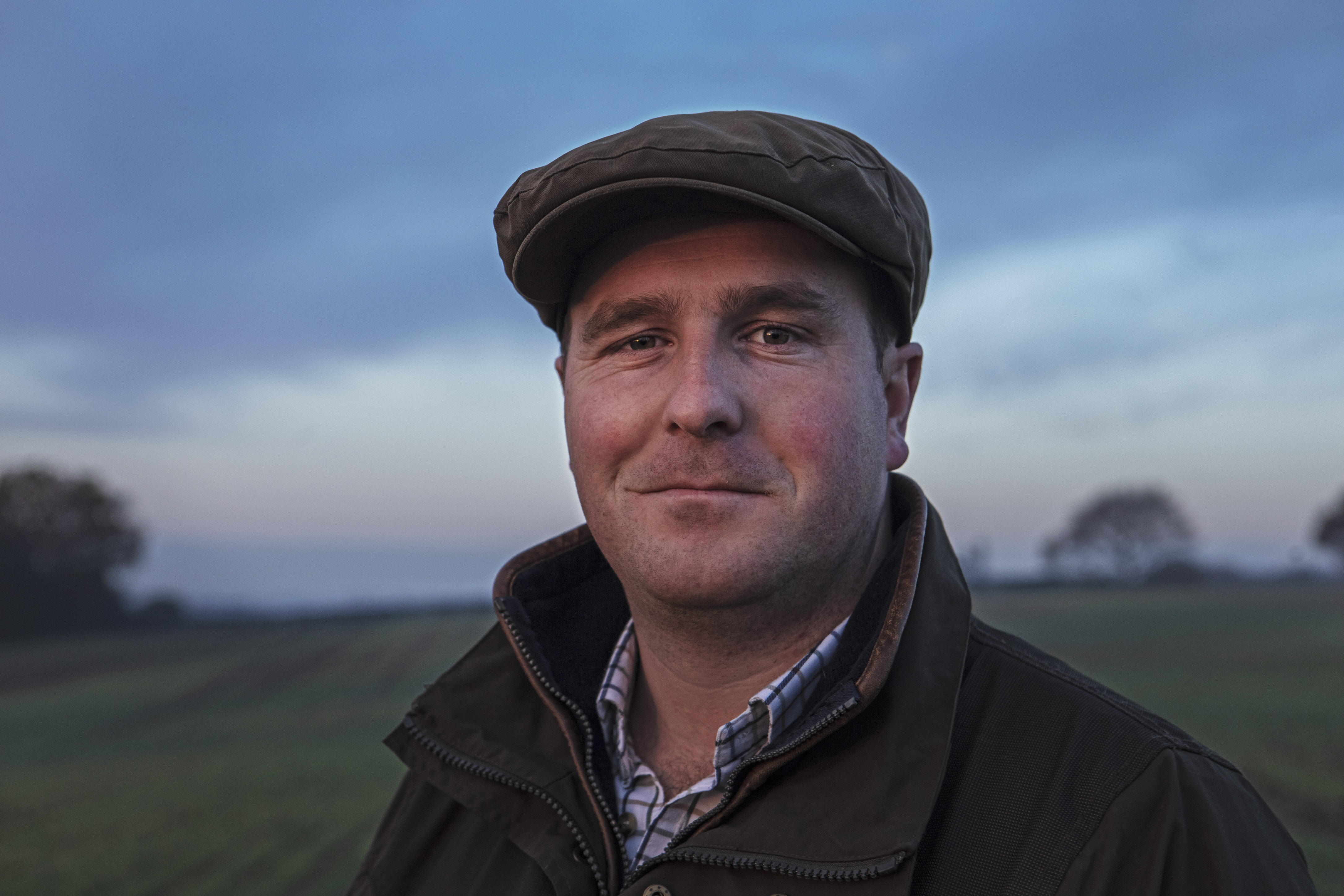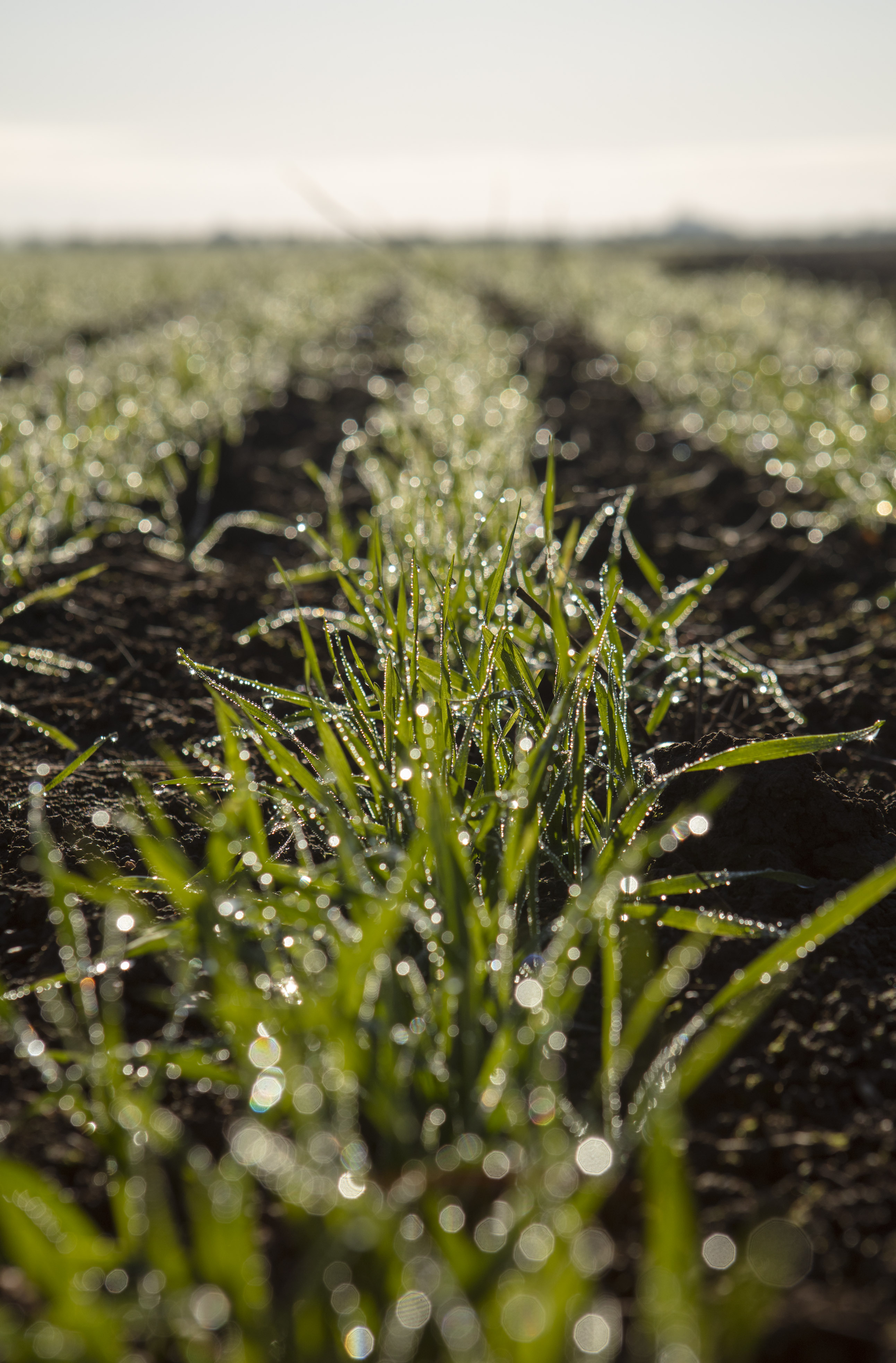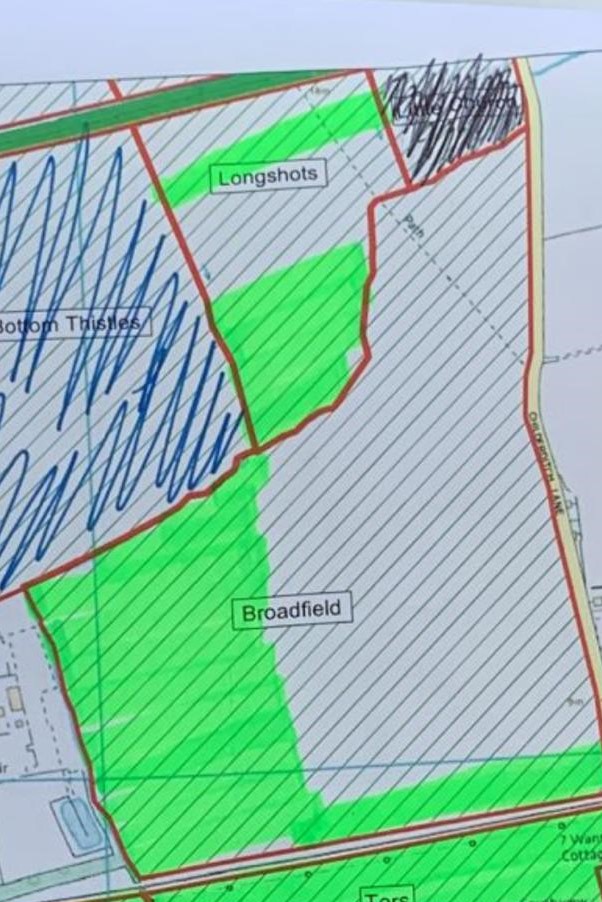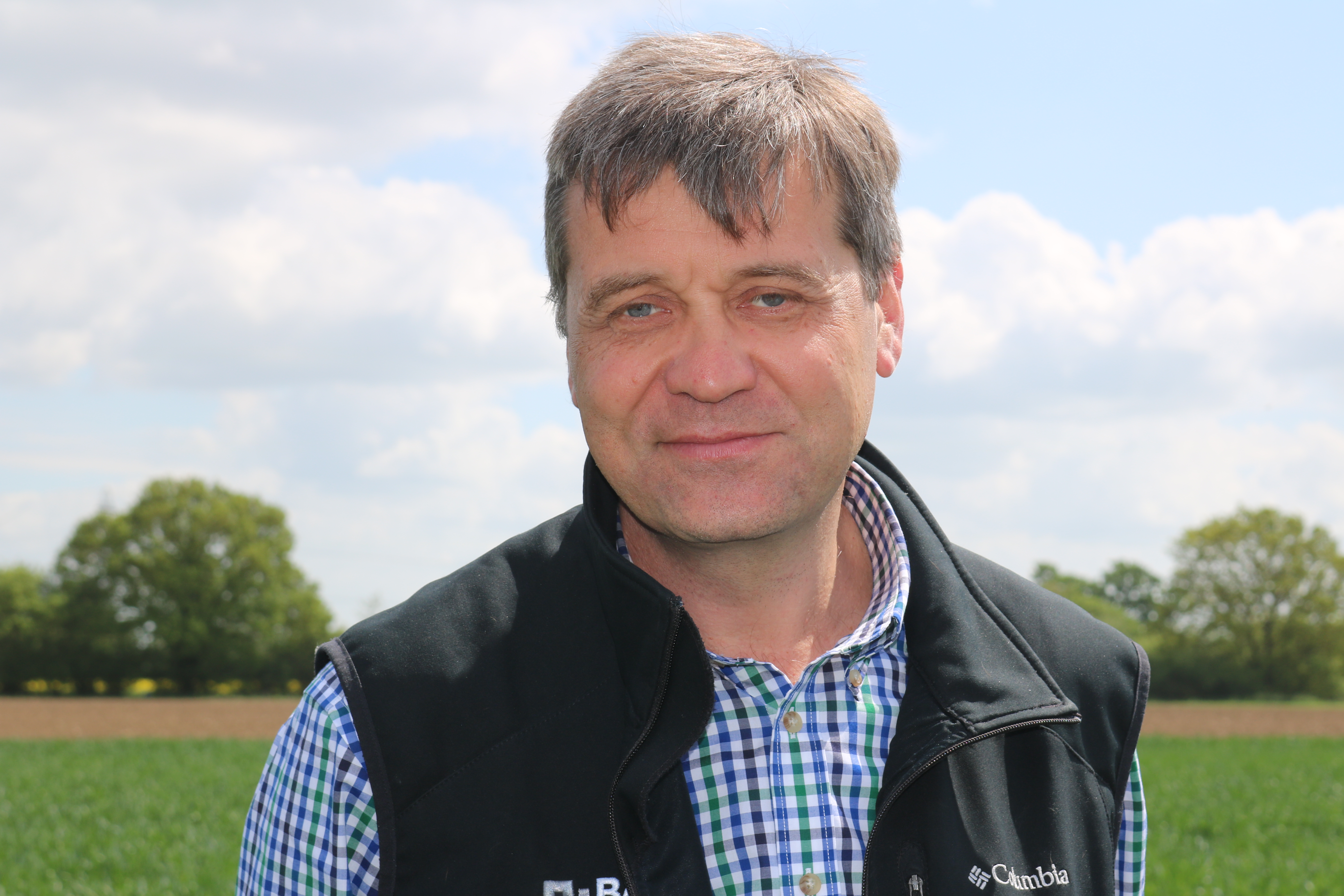Successfully bringing blackgrass under control on one Essex farm is a mission Ed Ford is looking to repeat as the business expands into new territories with new grassweed challenges. CPM pays a visit to find out how he intends to go about it.
Ideally I would like to apply Luximo to every headland because that’s where most of the problems are, but I’m not sure if I want to annoy the sprayer driver that much.
By Mike Abram
It’s mid-August and like many arable growers in East Anglia and the south, harvest is already over for Ed Ford, who farms just over 1000ha in conjunction with his brother, Charles, at Childerditch Farms.
The business is split into two main blocks. Keen to expand the business since taking over from their parents, the brothers have recently purchased a ring-fenced 400ha farm in central Bedfordshire farm, which Charles has moved to, and the home farm is 600ha in Brentwood, Essex.
Harvest on the block managed by Ed at Brentwood has been straightforward, he says. “I call it free combining – to get everything in store without drying a grain has been phenomenal.”
Yields were very respectable for his no-till system, slightly above his five-year average. Crusoe milling wheat has averaged 8.68t/ha this season, while a block of continuous Skyfall achieved 8.1t/ha, both measured over a weighbridge.
The only fly in the ointment is the grain protein level, which has hovered around 11.9-12%, rather than the 13% required for full spec milling wheat. “We’ve had a bit of yield dilution obviously in a bumper harvest year, but it is what it is. I can sleep at night because I know we put all the right amounts of nitrogen on, so we did all we can and sometimes you win, sometimes you lose.
“I still expect some sort of premium, once the millers wake up and realise there’s not going to be a lot of good wheat about.”
Traditionally late sellers of wheat, this season Ed has sold a little under 20% of the Bedfordshire farm’s wheat early, partly to help with cash flow. Two lots of around 500t have been contracted for either December movement at £365/t or for £318/t in November, respectively.
“The magic number used to be £200/t, now it’s £300/t. I wish we’d sold a little more now for £365/t, but we don’t like selling forward because we haven’t got it in the store.”
The remaining winter wheat will now be kept in store until next spring. “The merchants we deal with are saying sit tight until the mills make up their mind about what they’re going to do with this lower spec stuff. It could even be exportable.”
Remaining cash flow concerns, partly front-loaded by purchasing 50% of next season’s fertiliser requirements and up to 75% of autumn residual chemicals, will be covered by selling spring oats and winter beans pre-Christmas, as well as the winter barley sold off the field at harvest and the forward sales of winter wheat.
“When 28t of nitrogen at £750/t costs £21,000 and a load of DAP £30,000, it starts adding up,” he says. “And perhaps wrongly for cash flow, we’ve also bought all our Avadex (triallate), Crystal (flufenacet+ pendimethalin) and Roundup (glyphosate) up front after getting caught out last year on the latter. These are being paid for now or already paid for, when they won’t see the soil for another two months.”
Grassweeds remain a challenge on the heavy London clay soils at Brentwood. When Ed started with the family business around a dozen years ago, he says they were heading for a car crash with blackgrass.

When Ed Ford started with the family business around a dozen years ago, he says they were heading for a car crash with blackgrass.
There was an overreliance on Atlantis (mesosulfuron+ iodosulfuron) applied either in the autumn or spring, while the cultivation strategies, including the plough, kept bringing up fresh weed seed each year.
It necessitated some difficult decisions over several seasons, where broad acres of winter wheat were sprayed off by early March if blackgrass control didn’t appear likely to be successful enough. Those fields would then be spring cropped.
Another key has been the use of autumn residual herbicide stacks, with close management of any follow up treatments. “It’s being very vigilant in the autumn, and if you need to go back, go back.”
After five or six years of using that management blackgrass control had improved enough that it could be hand rogued, which has been a key step in maintaining control on the farm.
To further kerb the blackgrass population, a change in tillage practice was adopted with first a Cross Slot low disturbance no-till purchased in 2016, and then more recently a 12m Horsch Avatar. “We’d sprayed off a lot of land and got it as under control as we could, but we realised we were still bringing up fresh weed seed on the plough and cultivators every year, so the next step was obviously zero-till.
“We’ve been zero-till ever since, and it has been a lot easier to manage as we haven’t been bringing up fresh weed seed.”
While the Cross Slot was the correct choice in 2016 – “it was the only drill that was going to do the job then” – he found it could be a bit fickle in damp conditions. “The problem with the Cross Slot was the depth wheels are behind the seed coulter, so you disturb the ground in front of those wheels and then the mud picks up on the wheels and you lose your seed depth control,” he explains.
In contrast the Avatar seed depth control is in front of the coulter which mitigates that issue. The other big advantage for the Horsch drill is output, he says. “We went from a 6m Vaderstad to a 5m Cross Slot and now we’re using a 12m Avatar. We can drill 100ha a day with the Avatar, which means we can be a lot more flexible with our drilling timings.”
Moving to zero-till, while helpful for blackgrass control, has meant Ed’s started to see sterile brome creeping in, despite topping a 2.5-3m margin around the headland of each field during spring when fields are rogued and at harvest. “We also spray a sterile strip around fields on the edge of those margins to try and prevent it coming in that way.
“It’s becoming a big problem, particularly on our continuous wheat land. I’m not quite sure what we’re going to have to do – possibly put a bean crop in to break the cycle or just plough it,” he says.
“We’ve tried to mix up the spring chemistry a bit more, but I’ve noticed this year across the farm there’s a lot more brome about, but so is everyone else, so it might be a bad year. It just seems to be a weed of zero-till.”
It’s not the only emerging weed issue Ed and his brother are facing – the block of land in Bedfordshire has high levels of blackgrass, plus Italian ryegrass to tackle. With the purchase only completed after autumn drilling had started, a decision was made to see the farming year out with the previous owners.
The land had been farmed using traditional methods under several different owners for many years, explains Ed. So the brothers employed Philip Wright, an independent cultivation expert with Wright Resolutions, to do a comprehensive report on the farm’s suitability to switch into zero-till on the farm’s soil type, which ranges from light sand to heavy clay.
Following a positive response, a flexible arrangement has been agreed with a neighbour to do all the drilling and combining for up to the next three years from this autumn. A sprayer has been purchased to take that back in-house, says Ed.
“Their approach to farming is very similar to ours with a 12m Dale Drill and a 12m Avatar. They are going down the zero-till route like us, so we should work well with them.”
But the grassweed issues on parts of the farm are as bad as Ed has seen. “It’s definitely not roguable. The blackgrass is patchy but where it’s bad, it’s proper yield-knocking stuff. The ryegrass is more worrying – it just swamps crops. It’s not across the whole farm, it’s patchy but we need to stop those patches from spreading.”

Blackgrass has been brought under control by a combination of October drilling, spring cropping, crop destruction where grassweed levels are high, a move to zero tillage, a carefully managed stack of autumn herbicides and hand roguing.
A similar strategy to the one at Brentwood will be put in place, although the introduction of zero-till is a little earlier than happened in Essex. Winter wheat area is being cut back to 137ha – compared with 350ha on the slightly larger Essex unit, with more spring oats, linseed, winter barley and winter beans being grown.
Part of the reason for cutting the wheat area back is the question over whether, at current wheat prices and with the business’s cash flow requirements, they will be able to afford to spray off crops in early spring if one of the grassweeds is getting the upper hand, he admits.
Wheat drilling won’t start until at least October on either farm, he says. “We’ll use variable rate seeding in Bedfordshire to maximise plant populations to compete against the blackgrass and ryegrass where we can.”
The herbicide strategy on the Bedfordshire farm will be different to the previous one, he believes, with more emphasis on a strong pre-emergence residual programme. His usual standard stacked approach of Crystal (flufenacet+ pendimethalin) plus DFF and Avadex at pre-em is likely to be used on at least 50% of the farm’s wheat, with that quantity already in store. That’s typically followed up with Liberator (flufenacet+ DFF).
“There’s no evidence of any Avadex use on the farm, which is a go to product for us.” He’s hoping because it hasn’t been used, he’ll be pleasantly surprised by how well it does.

Ed Ford’s roguing map may be old school but the strategy has been an integral part of getting on top of blackgrass at Brentwood. The Luximo trial field was in ‘Longshots’ and the green highlighted areas are where rogueing was planned (i.e. where the farm standard was used).
He’s also considering using a decent amount of new residual herbicide Luximo (cinmethylin). In BASF Real Results trials for the past two years on the Essex farm he has been impressed by its performance, with a 25% uplift in blackgrass control when used in combination with pendimethalin and DFF versus his standard Crystal plus DFF pre-em in the first year.
In this season’s trial he was given more of a freehand by BASF, so he also applied Avadex as a standard approach. “What was a little odd was we walked the field at the end of October after it was applied [pre-em] and there was enough blackgrass to make me ask some questions. But then we came back a month later and it was all gone. So it looks like there was a delayed effect.”
But the most telling observation was at the end of May, when rogueing was being planned. The Luximo treated part of the field didn’t need roguing while the rest of his field did – or perhaps more accurately would have done if he had been able to source labour.
“It was a problem last year when we were let down. Unfortunately, it might have set us back a couple of years.”
Despite that excellent performance from Luximo, for this season the majority of the wheat will still be treated with the standard residual programme, after its early purchase. The price for Luximo remains closely guarded, he says, and he’s concerned the premium is likely to be relatively high. “I fear the price point with Luximo will be such that people won’t want to put Avadex on.”
It’s a tough one, he says, as his trials – and others he has seen – suggest the combination is technically very strong.
“We have one 25ha field that has been earmarked for Luximo definitely, which is coming out of spring oats where control was not great, and we think the only way we can go back into winter wheat is with the Luximo.
“And then we have the flexibility having only ordering 75% of the residual herbicide we need [of Crystal] to go with more, if we need to.
“Ideally I would like to apply Luximo to every headland because that’s where most of the problems are, but I’m not sure if I want to annoy the sprayer driver that much,” he adds.
Mixed grassweed strength for Luximo

The place where Luximo will give Ed a massive advantage is on the new farm where he has ryegrass too, says Hugo Pryce.
Mixed blackgrass and Italian ryegrass populations will be a particular strength for Luximo, suggests BASF agronomy specialist Hugo Pryce. “The place where Luximo will give Ed a massive advantage is on the new farm where he has ryegrass too.
“We know anything flufenacet-based is beginning to struggle against Italian ryegrass, and the uplift in performance with Luximo is fantastic.
“I had a trial in Norfolk where the untreated ryegrass population was around 350 heads/m2. Straight flufenacet was giving 35% control, while Luximo gave 85%. Luximo is good on blackgrass, but it’s phenomenally good on Italian ryegrass,” he says.
Activity against brome species is more hit and miss with soil residuals. In trials we have seen good control of sterile brome from Luximo based treatments, but it does depend on the grassweed germination pattern, says Hugo. “Luximo contributes towards brome control, but you need to have a pre-em and post-emergence plan in mind for brome.”
In general, feedback about grassweed control from around the country seems to have been slightly disappointing after almost perfect conditions for pre-em residual herbicides last autumn, notes Hugo.
“A lot of growers and agronomists were pleased with how grassweed control looked until Christmas, but there was more at heading than some were anticipating.”
It’s not clear whether that was because of later or spring germinating grassweeds, or prolific tillering but highlights the need for both using the strongest residual herbicide, Luximo, as the first hit, and considering sequences to prolong residual activity where required, he says.
The Real Results Circle
BASF’s Real Results Circle farmer-led trials are now in their sixth year. The initiative is focused on working with 50 farmers to conduct field-scale trials on their own farms using their own kit and management systems. The trials are all assessed using ADAS’ Agronomics tool which delivers statistical confidence to tramline, or field-wide treatment comparisons – an important part of Real Results.
In this series we follow the journey, thinking and results from farmers involved in the programme. The features also look at some other related topics, such as environmental stewardship and return on investment.
We want farmers to share their knowledge and conduct on-farm trials. By coming together to face challenges as one, we can find out what really works and shape the future of UK agriculture.
To keep in touch with the progress of these growers and the trials, go here.
This article was taken from the latest issue of CPM. For more articles like this, subscribe here.




